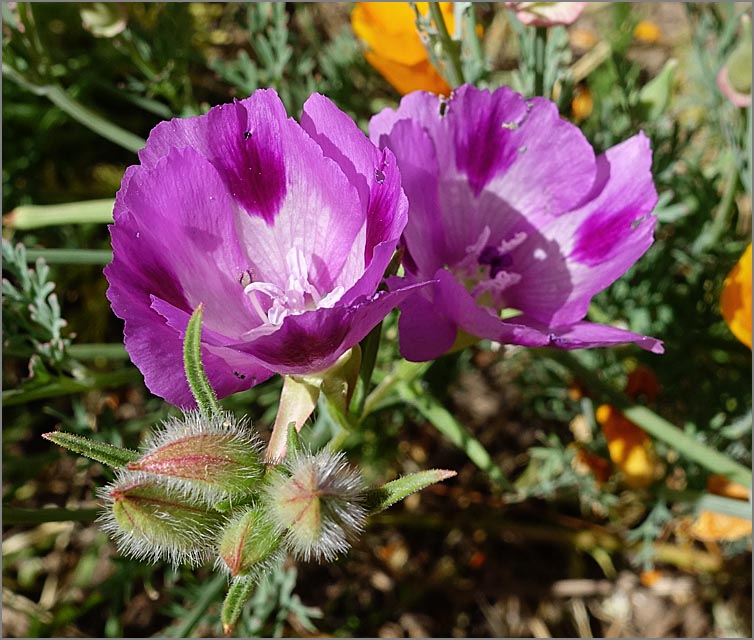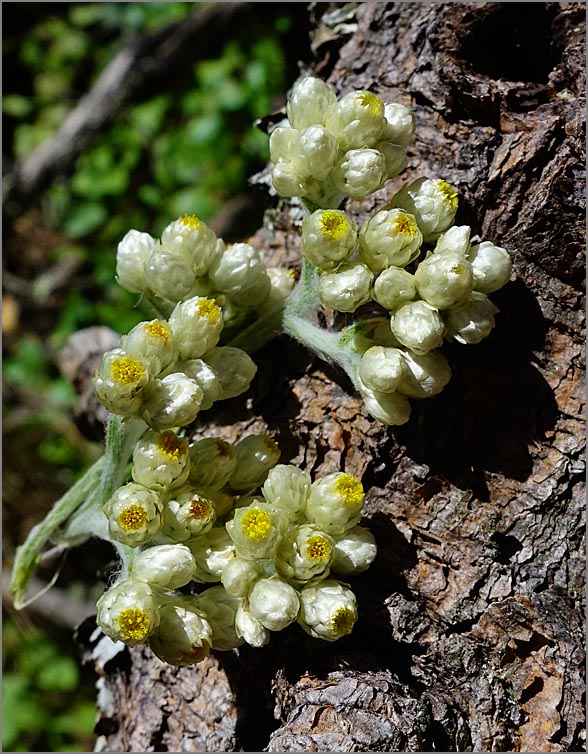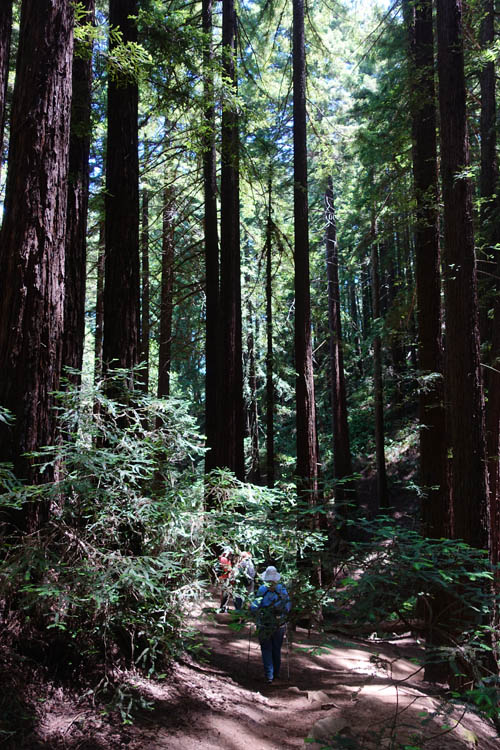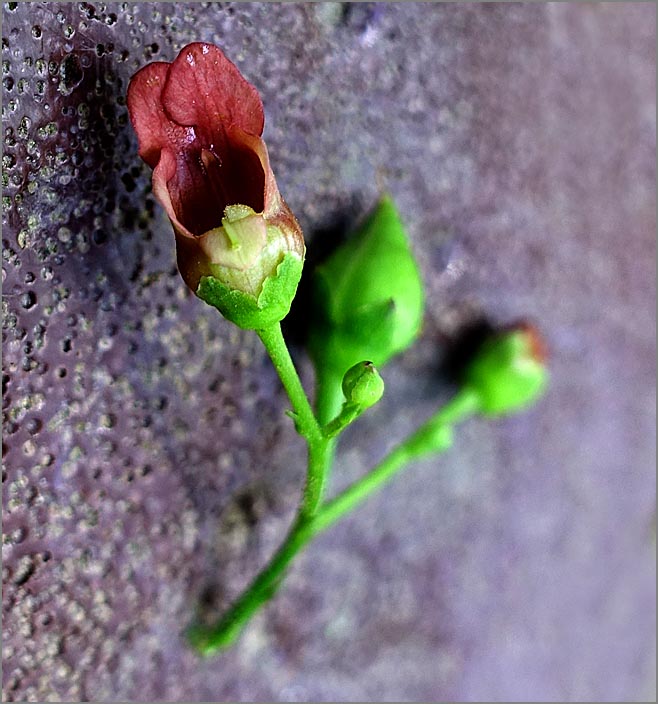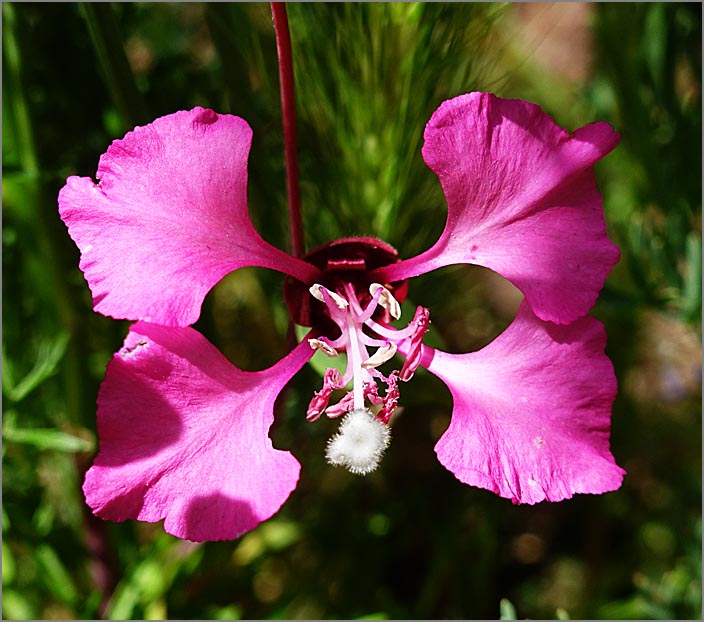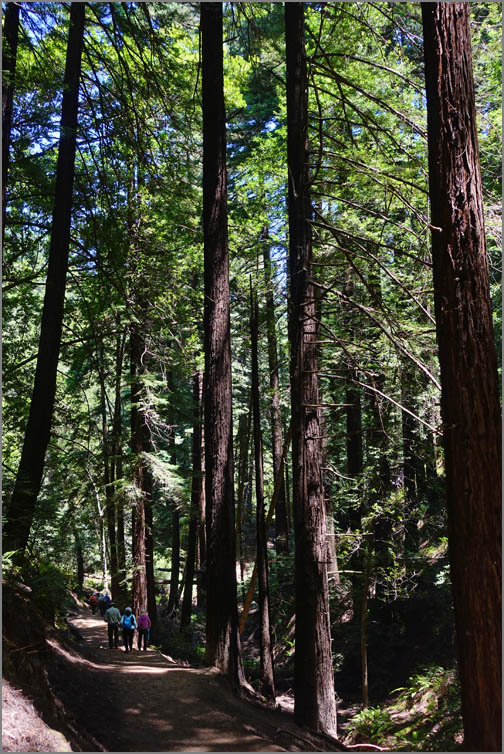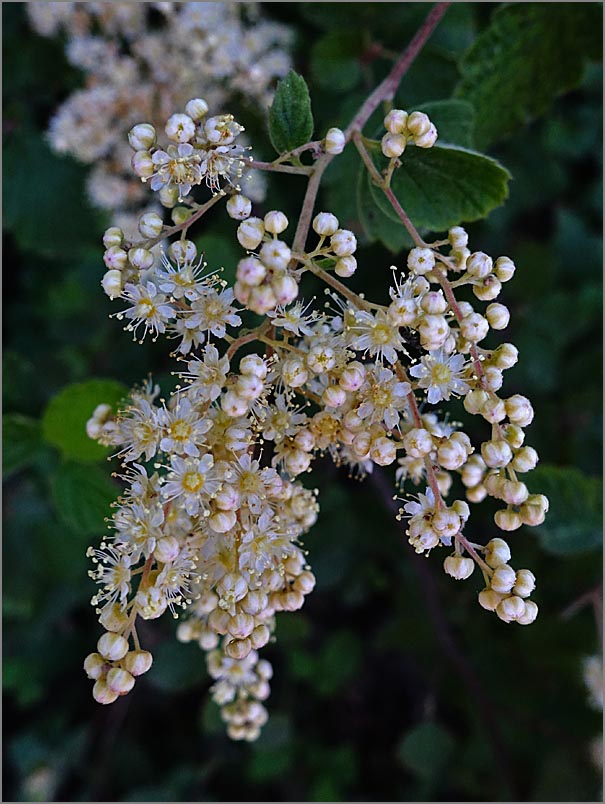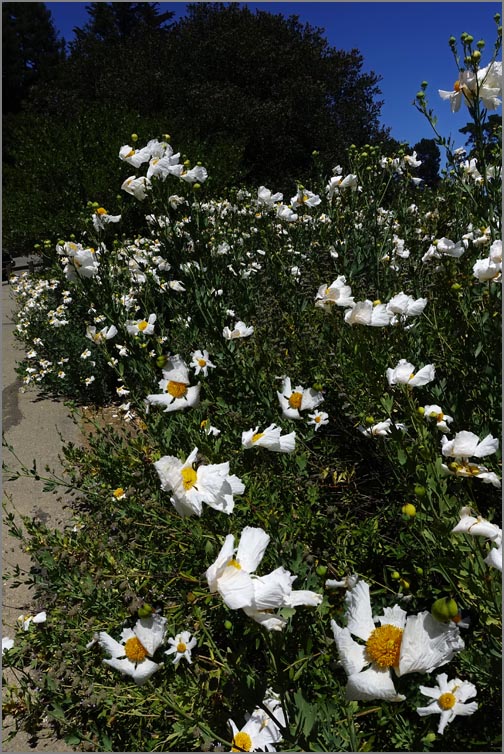WEST RIDGE TO FRENCH TRAIL
June 6,
2019
Home page
Hike Description:
Redwood Regional came
into being in 1937 and was one of the first East Bay Regional Parks. The
park has 1836 acres, of which 700
or so are dense groves of redwoods,
with about 40 miles of trails throughout. It's located 5 miles east of
Oakland and there are parking lots on the west, south and north
sides. The park runs roughly north west to south east with the south-west side
being more lush and the north-east side getting more direct sun and being
consequently drier.
Therefore we often hike the south-west side in hotter weather as it usually stays
relatively cool.
This day we took the West
Ridge Trail to Tres Sendas, then up the French Trail. The West Ridge Trail
is somewhat open with glimpses of the deep forest from time to time. As you
drop down to Tres Sendas, it quickly gets very dense and dark as you follow
a creek bed to lower elevations. The French Trail climbs back up steeply in
parts and slowly opens up as you get back on the Ridge Trail. A nice 3 mile hike guaranteed to get the blood
moving.
Directions: The best access from the East Bay
is via Hwy 13 and Joaquin Miller or Redwood Road.
From the east side of Contra Costa we recommend the
Skyline Staging Area via 24 and Grizzly Peak as it makes for
stunning view of Oakland and San Francisco.
Park and Trailmap:
here
Location map:
here
Cost: $5 / car for day use.
Blooming Plants Not
Photographed:
NN= Non Native
Brassica nigra (Black Mustard)NN
Briza maxima (Rattle Snake Grass)NN
Carduus pycnocephalus (Italian Thistle)NN
Chlorogalum pomeridianum (Soap Plant)
Claytonia perfoliata (Minerís Lettuce)
Conium maculatum (Poison Hemlock)NN
Cotoneaster pannosus (Silverleaf Cotoneaster)NN
Diplacus aurantiacus (Sticky Monkey Flower)
Eschscholzia californica (Ca. Poppy)
Geranium dissectum (Cut Leaf Geranium)NN
Heracleum maximum (Cow Parsnip)
Hypochaeris radicata (Rough Catís Ears)NN
Lonicera hispidula (Ca. Honeysuckle)
Lysimachia arvensis (Scarlet Pimpernel)NN
Myosotis discolor (Forget Me Not)NN
Navarretia squarrosa (Skunk Weed)
Plantago lanceolata (English Plantain)NN
Rosa spithamea Ground Rose)
Rubus armeniacus (Himalayan Blackberry)NN
Sambucus nigra (Blue Elderberry)
Sanicula crassicaulis (Snake Plant)
Silybum marianum (Milk Thistle)NN
Sisymbrium officinale (Hedge Mustard)NN
Sisyrinchium bellum (Blue Eyed Grass0
Solanum americanum (Small Nightshade)
Sonchus oleraceus (Smooth Sow Thistle)NN
Spergularia rubra (Purple sand Spurrey)NN
Stachys ajugoides (Hedge Nettle)
Verbena lasiostachys (Verbena)
Vinca major (Vinca)NN
Ferns of Photographed:
Pentagramma triangularis (Goldback Fern)
Peridium aquilinum var. pubescens (Bracken Fern)
Polypodium calirhiza (Nested Polypody Fern)
Polystichum munitum (Sword Fern)
|
|
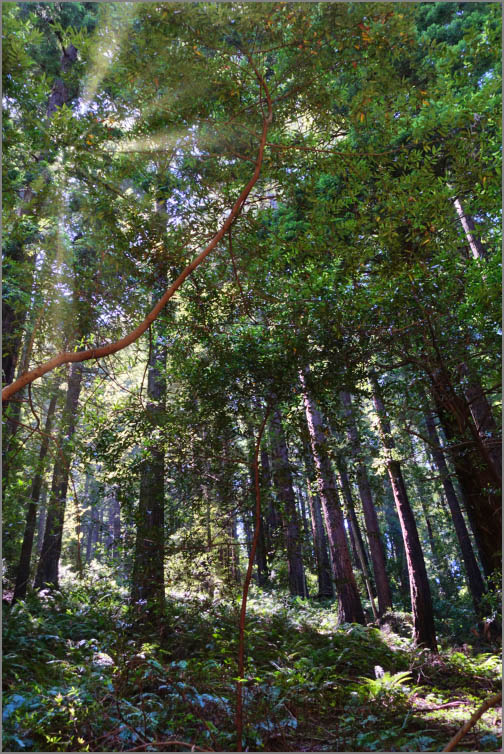
Glimpses of the deep redwoods from the West Ridge Trail. |
| |

